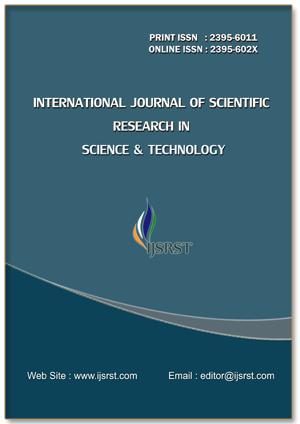Study of Fuzzy Closure and Fuzzy Point
DOI:
https://doi.org/10.32628/IJSRST241151218Keywords:
Fuzzy Boundary, Reference Function, TopologyAbstract
Three years after Zadeh introduced the notion of a fuzzy set in his seminal paper in 1965, the first paper of fuzzy topology, introduced by Chang, appeared in 1968. Atanassov introduced and studied the concept of intuitionistic fuzzy sets as a generalization of fuzzy sets. Coker came out with the concept called “intuitionistic fuzzy topological spaces”. Tong introduced and investigated strong forms of open sets called strong regular open, θ-open, and δ-open sets, respectively. In this present paper, we studied fuzzy closure and fuzzy point [1-5].
📊 Article Downloads
References
Ana Colubi, Renato Coppi, Pierpaolo Durso and Maria Angeles Gil., “Statistics with fuzzy random variables”, International journal of Statistics, LXV(3), PP: 277 - 303, (2007).
Ana Colubi, Santos Dominguez – Menchero, J. Miguel Lopez Diaz and Relescu. D.A., “On the formalization of fuzzy random variables”, Inform. Sci., 133, PP: 3 – 6, (2001).
Arnold F.Shapiro, “Fuzzy random variables”, Insurance: Mathematics and Economics, 44(2), PP: 307 – 314, (2009).
Arnold F. Shapiro., “Implementing Fuzzy Random Variables -- Some
Preliminary Observations”, ARCH 2013.1 Proceedings, Society of Actuaries,PP: 1 – 15, (2012).
Asok K. Nanda and Moshe shaked., “The hazard rate and the reversed hazard rate orders with applications to order statistics”, Ann. Inst. Statist. Math., 53(4), 183 PP: 853 – 864, (2001).
Aurelia Florea, Eugen Paltanea and Dumitru Bala., “Convex ordering Properties and Applications”, Journal of Mathematical Inequalities, 9(4), PP: 1245 – 1257, (2015).
Block. H.W, Savits. T.H and Singh. H., “The reversed hazard rate function”, Probability in Engineering and Informational Science, 12(1), PP: 69 – 90, (1998).
Bo – Yan Xi and Feng Qi., “Some integral inequalities of Hermite – Hadamard type for convex functions with applications to means”, Journal of function spaces and applications, 2012, PP: 1 – 14, (2012).
Capocelli. R. M and De Luca. A., “Fuzzy Sets and Decision Theory”, Information and Control., 23, PP: 446-473, (1973).
Chanas S. and Florkiewicz B., “Deriving Expected values from probabilities of fuzzy subsets”, European Journal of Operations Research, 50, PP: 199– 210, (1991).
Cheng. C.H., “A new approach for ranking fuzzy numbers by distance method”, Fuzzy Sets and Systems, 95, PP: 307 – 317, (1998).
Couso I. and Sanchez. L., “Upper and lower probabilities induced by a fuzzy random variable”, Fuzzy Sets and Systems, 165, PP: 1 – 23, (2011).
Erich Peter Klement., “Fuzzy [17] Ezzati. R, Allahviranloo. T, Khezerloo. S and Khezerloo. M, “An approach for ranking of fuzzy numbers”, Expert systems with applications, 39, PP: 690 – 695, (2012).
Felix Belzunce., “An introduction to the theory of stochastic orders”, Boletin de Estadistica e investigacion operativa, 26(1), PP: 4 – 18, (2010).
Féron. R, "Ensembles aleatoires flous", C.R. Acad. Sci. Paris, 282, PP: 903-906, (1976).
Florea. A and Niculescu. C.P, “A Hermite – Hadamard inequality for convex –concave symmetric functions”, Bull. Soc. Sci. Math. Roum. 50, PP: 149 – 156, (2007).
Guixiang Wang Jing Li, “Approximations of fuzzy numbers by step type fuzzy numbers”, Fuzzy sets and systems, 310, PP: 47 – 59, (2017).
Downloads
Published
Issue
Section
License
Copyright (c) 2024 International Journal of Scientific Research in Science and Technology

This work is licensed under a Creative Commons Attribution 4.0 International License.
https://creativecommons.org/licenses/by/4.0




